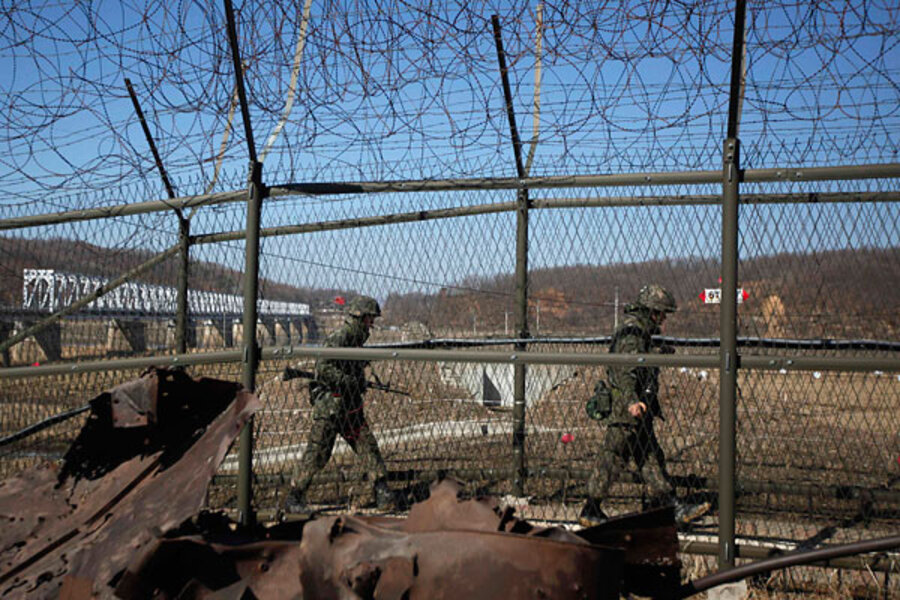A. The dictatorship has repeatedly violated the terms of the armistice by the use of lethal force against South Korean forces, notes Patrick Cronin, senior director of the Asia-Pacific Security Program at the Center for a New American Security. This happened most recently in 2010 when a North Korean submarine torpedoed the South Korean warship Cheonan, killing 46 South Korean military sailors.
While a rhetorical threat to ignore the terms of the cease-fire is less consequential than the actual violations of the agreement in past years, notes Dr. Cronin, the bluster is still disturbing.
Pyongyang has repeatedly threatened to ignore the terms of the cease-fire, a move that is “potentially quite dangerous” because it sets out the rules of interaction for the troops along the 38th parallel of the demilitarized zone, adds Victor Cha, senior adviser and the Korea Chair at the Center for Strategic and International Studies.
“If North Korea decides to drive trucks or bring heavier weapons into that area, that would be a violation of the armistice and potentially quite destabilizing because we would have to react to the introduction of heavy armaments,” he said. “The point is that this is the most heavily militarized border in the world that is on a hair-trigger response.”






